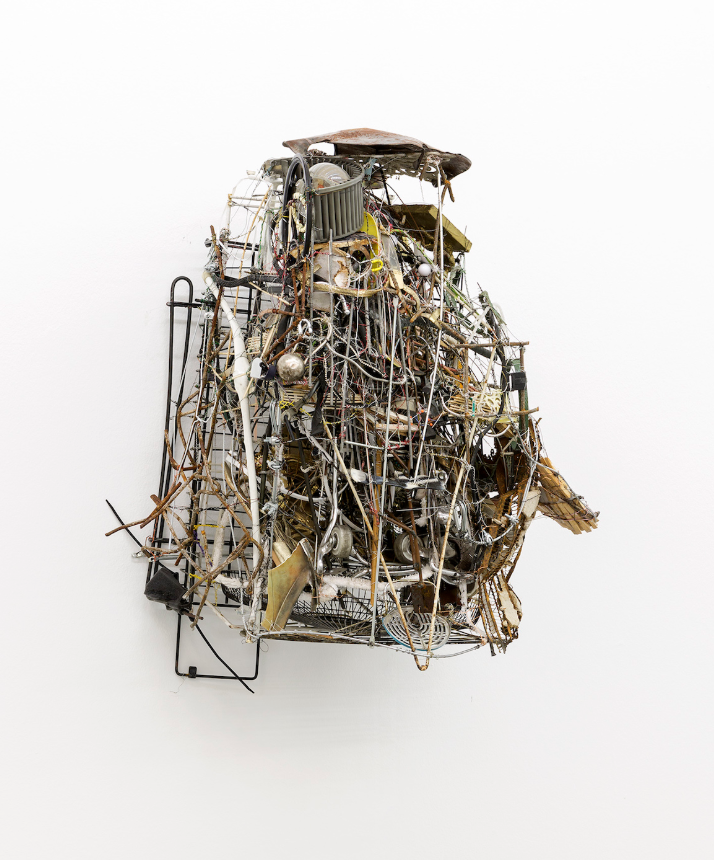Whitney Biennial 2019 | Art & Artists
May 17–Oct 27, 2019
Whitney Biennial 2019 | Art & Artists
Robert Bittenbender
9
Floor 6
Born 1987 in Washington, DC
Lives in Brooklyn, NY
Robert Bittenbender constructs dense reliefs using traditional art materials such as paint and graphite, but he also incorporates cheap found objects and detritus picked up on the streets. Although each individual element has been meticulously incorporated into the whole, the overall effect is one of improvisation. The artist treats everything as a potential source of inspiration, so that a wire hanger carries as much potential as paint.
Bittenbender’s assemblage aesthetic suggests the influence of artists who came to prominence in the 1960s, including Bruce Conner and Lee Bontecou, both of whom composed refuse and rubbish into three-dimensional works that hang on the wall and protrude into space. Bittenbender avoids bohemian romanticism, instead linking what he calls “a funky East Village garbage aesthetic” to the market forces that frame urban squalor as palatable in order to fuel gentrification.
Sister Carrie, 2017
-
0:00
Robert Bittenbender
0:00
Narrator: Robert Bittenbender made these sculptures using trash he found in the industrial sections of Long Island City, Queens. He purchased a few components, but he found that the compositions needed a great deal of material. Robert Bittenbender.
Robert Bittenbender: It just made sense to find things. Because of the amount of things I needed to work with for the metabolism to fulfill itself.
Narrator: Bittenbender has explained that using objects he finds on the streets gives him a useful distance on the sculptures.
Robert Bittenbender: I'm in a pace that's kind of beyond my control. I guess it's a way to step out of my own subjectivity. It's not just like, "Oh, I'm making like a mark in this way." It absolves me of just narcissistically trying to express myself. It feels a little beyond me in a healthier way than maybe if I try to strong arm them into certain moods or vibes or gestures.

